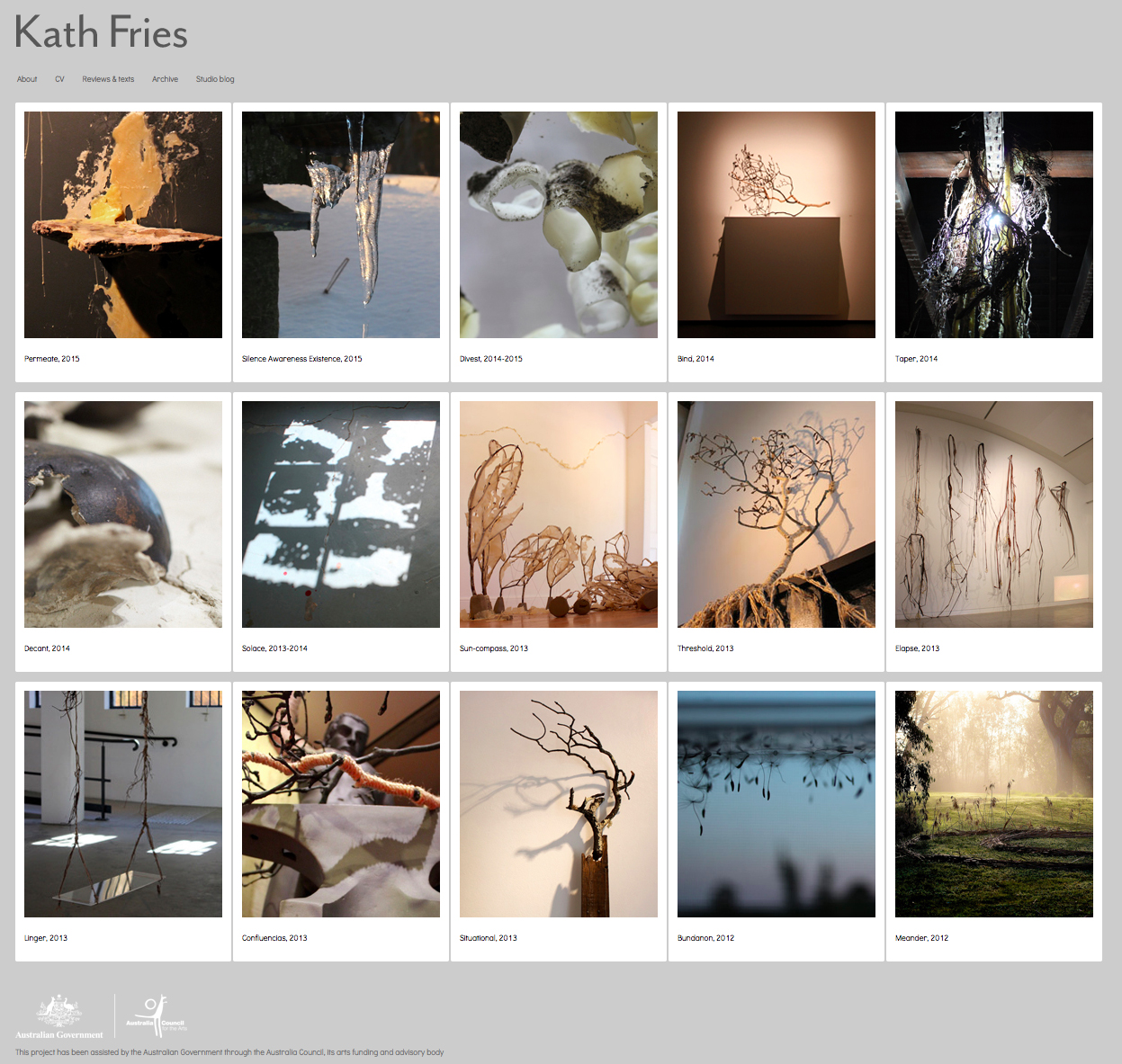 |
| Kath Fries, Work in progress Bundanon studio, 2012 |
One of the materials I've collected on site at Bundanon are leaves and branches from the Bunya Pines, growing a few hundred metres down the road from my studio, at the Trust's historic homestead. Bunya Pines have tough spiky leaves that coil around their stems, somewhat like a DNA spiral.
 |
| Kath Fries, Work in progress Bundanon studio, 2012 |
This type of natural helix relates to the mathematical golden ratio which has been used for centuries to analyse proportions and patterns in nature and in man-made systems.
 |
| Kath Fries, Work in progress Bundanon studio, 2012 |
While examining these spirals of Bunya leaves in my studio, I dismantled some by pulling the leaves off the the twigs. The spiky points and individual curves and characters of each leaf, prompted me to look at them in a different manner. This process of separating the singular from the mass, then going back to reconsider my accumulation of materials in a different light, is a frequent method in my art practice.
 |
| Kath Fries, Work in progress Bundanon studio, 2012 |
 |
| Kath Fries, Work in progress Bundanon studio, 2012 |
 |
| Kath Fries, Work in progress Bundanon studio, 2012 |
When considering a site to create an installation in, I often work with obscure traces inadvertently left behind by other people. Here, I've been drawn to the numerous pin holes in the walls, left by previous artists who have worked in this studio. I pushed the needle sharp points of the Bunya leaves into the tiny pin holes; finding that the leaves are strong enough to hook into the wall and remain in place, sticking out at perpendicular angles and curving away. My resulting wall installation suggests a gust of dry wind, like the recent ones around here that have been stirring up dust and tossing around tree branches.
 |
| Kath Fries, Bundanon studio diary, 2012 |
 |
| Kath Fries, Bundanon studio diary, 2012 |
The Bunya Pine (Araucaria bidwillii), is a large evergreen coniferous tree, native to south-east Queensland. Such grandiose trees were planted around homesteads in New South Wales in the mid to late 1800s. The Bundanon historic house built in 1866, has a few of these tall, impressive old specimens growing in its garden. They are magnificent from a distance however up close they become much less inviting. Not only are their spiky leaves unfriendly to touch but the trees produce seed cones over 40cm in diameter, weighing 5-10kg each. When ripe, such a cone has been known to knock unconscious a person standing beneath the tree. Fortunately for me, Bunya cones fall in Autumn not Spring - so I'm fairly safe at this time of year to forage beneath their branches, except for occasionally jabbing my fingers on the spiky leaves.
 |
| Kath Fries, Bundanon studio diary, 2012 |
I'm currently one of several artists-in-residence at Bundanon Trust. This artist-in-residence diary traces an important aspect of my process as I get to know the site and begin making work in response to my experience of being here.






























%2BWhite%2C%2BBRANCH%2B3d.jpg)

















.jpg)













